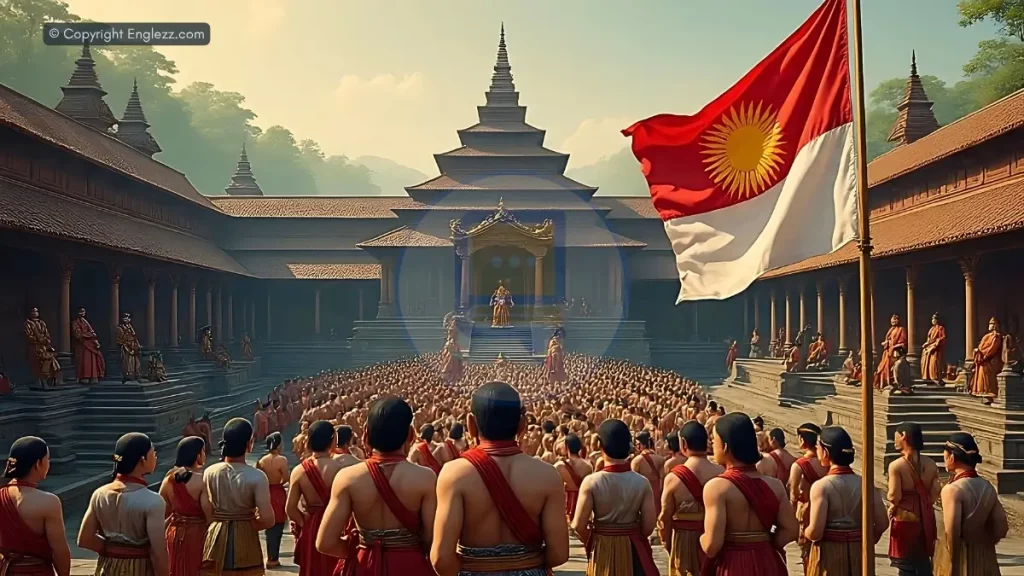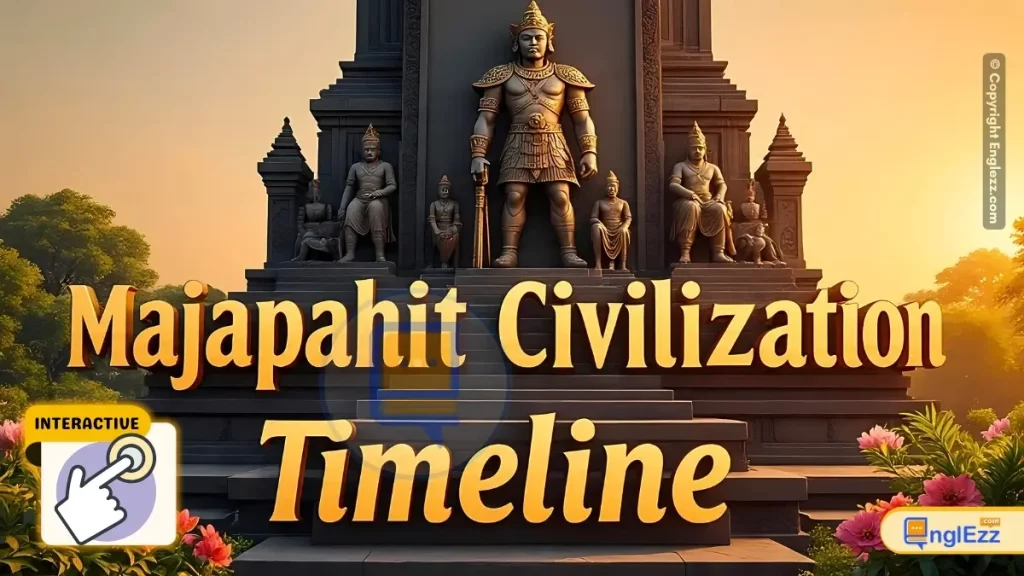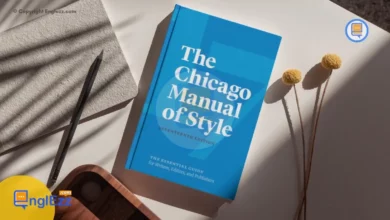
The Story of Majapahit Empire
The Golden Age of Indonesian Thalassocracy (1293-1527 CE)
Introduction
The Majapahit Journey
The Majapahit Empire was a powerful thalassocracy (maritime empire) in Southeast Asia, based on the island of Java (modern-day Indonesia). At its peak in the 14th century, Majapahit was one of the most powerful empires in Southeast Asian history, with influence extending over much of the Indonesian archipelago.
Majapahit was known for its sophisticated administration, extensive trade networks, and cultural achievements. The empire’s capital was located in Trowulan, East Java, which was described as a magnificent city with grand temples, palaces, and an advanced irrigation system. Majapahit’s golden age was marked by the reign of Hayam Wuruk (1350-1389 CE) and his prime minister Gajah Mada, who expanded the empire’s influence through both diplomacy and military campaigns.
Early Period
The Majapahit Empire was founded in 1293 CE by Raden Wijaya, who took advantage of the declining Singhasari kingdom and repelled a Mongol invasion. The early period saw the consolidation of power in East Java and the establishment of Majapahit as a regional power.
Golden Age
The golden age of Majapahit occurred under the reign of Hayam Wuruk (1350-1389 CE) and his prime minister Gajah Mada. During this period, Majapahit reached its greatest territorial extent and cultural achievements, with influence extending across the Indonesian archipelago.
Modern Legacy
Though the empire declined in the 15th century, Majapahit remains a powerful symbol in Indonesian nationalism. Its legacy can be seen in modern Indonesian culture, language, and national identity. Archaeological discoveries continue to reveal the sophistication of Majapahit civilization.
Interactive Majapahit Empire Timeline
Foundation of Majapahit
Raden Wijaya establishes the Majapahit Empire after defeating the Mongol Yuan Dynasty forces sent to Java.
Read moreIn 1293 CE, Raden Wijaya, a prince of the declining Singhasari kingdom, took advantage of a Mongol invasion force sent by Kublai Khan to establish his own kingdom. After allowing the Mongols to defeat his enemies, Wijaya then turned against the Mongols and drove them from Java.
Key aspects of Majapahit’s foundation:
- Capital established at Trowulan in East Java
- Adoption of the name “Majapahit” from the bitter maja fruit found at the site
- Consolidation of power in East Java
- Establishment of a Hindu-Buddhist syncretic state
Wijaya ruled as Kertarajasa Jayawardhana until his death in 1309 CE, laying the foundation for what would become one of Southeast Asia’s greatest empires.
Further Reading
- Hall, D.G.E. A History of Southeast Asia (1981)
- Pigeaud, Theodore G.Th. Java in the 14th Century (1960-1963)
Gajah Mada’s Palapa Oath
Gajah Mada, the powerful prime minister, takes his famous Palapa Oath, vowing not to enjoy spices until all Nusantara (archipelago) is united under Majapahit.
Read moreGajah Mada, who served as mahapatih (prime minister) under Queen Tribhuwana Wijayatunggadewi, took his famous Palapa Oath in 1334 CE, declaring he would not enjoy any spices (palapa) until the entire archipelago was united under Majapahit’s rule.
Significance of the Palapa Oath:
- Became the ideological foundation for Majapahit’s expansion
- Demonstrated Gajah Mada’s ambition and loyalty
- Inspired later Indonesian nationalists as a vision of unity
- Marked the beginning of Majapahit’s imperial expansion
Under Gajah Mada’s leadership, Majapahit would indeed expand its influence across much of the Indonesian archipelago through a combination of military campaigns and diplomatic marriages.
Further Reading
- Berg, C.C. Het Rijk van de Vijvoudige Buddha (1929)
- Wolters, O.W. The Fall of Srivijaya in Malay History (1970)
Hayam Wuruk’s Ascension
Hayam Wuruk becomes king, marking the beginning of Majapahit’s golden age under his rule and Gajah Mada’s leadership.
Read moreHayam Wuruk ascended to the throne in 1350 CE at age 16, inheriting a kingdom that was already expanding under his mother, Queen Tribhuwana, and Gajah Mada. His 39-year reign would become Majapahit’s golden age of power, prosperity, and cultural achievement.
Key aspects of Hayam Wuruk’s reign:
- Continued expansion of Majapahit’s influence across the archipelago
- Development of sophisticated administration and legal systems
- Flourishing of arts, literature, and architecture
- Establishment of extensive trade networks
The Nagarakretagama, a 14th-century Javanese poem, provides a detailed account of Hayam Wuruk’s reign and the splendor of Majapahit at its height.
Further Reading
- Prapanca, Mpu. Nagarakretagama (1365 CE)
- Robson, S.O. Desawarnana (Nagarakrtagama) (1995)
Nagarakretagama Written
The epic poem Nagarakretagama is completed, providing a detailed account of Majapahit’s administration and Hayam Wuruk’s reign.
Read moreThe Nagarakretagama, written by the Buddhist monk Prapanca in 1365 CE, is the most important literary source on Majapahit’s golden age. This kakawin (Javanese poem) describes the royal tour of Hayam Wuruk through his realm and provides invaluable information about Majapahit’s administration, territories, and royal ceremonies.
Key information from the Nagarakretagama:
- Description of Majapahit’s capital at Trowulan
- List of vassal states and tributary relationships
- Details of royal ceremonies and religious life
- Accounts of the royal family and court officials
The poem presents an idealized vision of Majapahit as a prosperous, well-administered empire with a complex hierarchy of officials and territories. It remains a crucial source for understanding Javanese court life and Majapahit’s imperial ideology.
Further Reading
- Pigeaud, Theodore G.Th. Java in the 14th Century (5 volumes, 1960-1963)
- Zoetmulder, P.J. Kalangwan: A Survey of Old Javanese Literature (1974)
Death of Hayam Wuruk
Hayam Wuruk dies, marking the beginning of Majapahit’s gradual decline due to succession disputes and the rise of Islamic sultanates.
Read moreThe death of Hayam Wuruk in 1389 CE (followed by Gajah Mada’s death around 1364 CE) marked the beginning of Majapahit’s gradual decline. While the empire remained powerful for several more decades, it faced increasing challenges from succession disputes and the rise of Islamic sultanates in the archipelago.
Factors in Majapahit’s decline:
- Succession conflicts among the royal family
- Rising power of coastal Islamic trading cities
- Economic shifts favoring Muslim traders
- Decentralization of power to regional lords
- Natural disasters affecting Java’s agricultural base
Despite these challenges, Majapahit remained an important regional power until the early 16th century, when the last Hindu courts moved to Bali and the Demak Sultanate took control of much of Java.
Further Reading
- Ricklefs, M.C. A History of Modern Indonesia Since c. 1200 (2008)
- Reid, Anthony. Southeast Asia in the Age of Commerce, 1450-1680 (1988-1993)
Fall of Trowulan
The Majapahit capital Trowulan is sacked, marking the effective end of Majapahit as a major power, though small Hindu courts persist in East Java.
Read moreIn 1478 CE (or possibly 1527 CE according to some sources), the Majapahit capital at Trowulan was sacked, traditionally by forces from the rising Demak Sultanate. This event marked the effective end of Majapahit as a major political power, though smaller Hindu courts continued to exist in East Java for some time.
Consequences of Trowulan’s fall:
- Displacement of the Hindu-Javanese elite to Bali and East Java
- Rise of Islamic sultanates as dominant powers in Java
- Preservation of Majapahit cultural traditions in Bali
- Transformation of Java’s political and religious landscape
The exact date and circumstances of Majapahit’s final collapse remain debated among historians, with some sources suggesting a later date in the early 16th century. Regardless, by the mid-16th century, Islamic sultanates had become the dominant powers in Java.
Further Reading
- Ricklefs, M.C. Mystic Synthesis in Java: A History of Islamization from the Fourteenth to the Early Nineteenth Centuries (2006)
- Lombard, Denys. Le Carrefour Javanais (1990)
Rediscovery of Majapahit
European scholars and archaeologists begin studying Majapahit ruins, sparking renewed interest in Java’s Hindu-Buddhist past.
Read moreIn the 19th century, European colonial scholars and archaeologists began systematic study of Majapahit remains, particularly at Trowulan. This rediscovery of Java’s Hindu-Buddhist past came as the Dutch colonial government was establishing control over Java and seeking to understand its history.
Key figures in Majapahit’s rediscovery:
- Sir Thomas Stamford Raffles, who documented ruins in his History of Java (1817)
- Dutch archaeologists who excavated Trowulan in the late 19th/early 20th centuries
- Javanese scholars who preserved manuscripts and traditions
These early studies laid the foundation for modern understanding of Majapahit’s history and culture, though interpretations were often colored by colonial perspectives.
Further Reading
- Raffles, Thomas Stamford. The History of Java (1817)
- Krom, N.J. Hindoe-Javaansche Geschiedenis (1926)
Majapahit in Indonesian Nationalism
Indonesian nationalists adopt Majapahit as a symbol of pre-colonial unity and greatness, influencing modern Indonesian identity.
Read moreIn the early 20th century, Indonesian nationalists began looking to Majapahit as a symbol of pre-colonial unity and greatness. Gajah Mada’s Palapa Oath was reinterpreted as a vision of Indonesian national unity, and Majapahit became an important part of nationalist historiography.
Majapahit’s influence on modern Indonesia:
- Inspiration for national unity and territorial claims
- Symbol of cultural pride and historical continuity
- Influence on national symbols and architecture
- Debates about its actual extent versus nationalist claims
Today, Majapahit remains a powerful symbol in Indonesian national identity, featured in school curricula, government propaganda, and popular culture. The empire’s legacy continues to shape how Indonesians view their past and imagine their future.
Further Reading
- Vickers, Adrian. A History of Modern Indonesia (2005)
- Wood, Michael. Official History in Modern Indonesia: New Order Perceptions and Counterviews (2005)
Majapahit Empire Quiz
Test Your Knowledge of Majapahit History
Frequently Asked Questions
Common Questions About Majapahit Empire
The exact extent of Majapahit’s empire is debated among historians. According to the Nagarakretagama, Majapahit’s influence extended over much of modern-day Indonesia, including:
- Java, Bali, and Madura (direct control)
- Parts of Sumatra, Borneo, and Sulawesi (tributary relationships)
- Some areas of the Malay Peninsula
However, modern historians distinguish between areas under direct control and those with looser tributary or trade relationships. Majapahit was primarily a thalassocracy (maritime empire) that controlled key ports and trade routes rather than large inland territories.
Majapahit was characterized by a unique Hindu-Buddhist syncretism:
- The royal family practiced a blend of Hinduism (particularly Shivaism) and Buddhism
- Tolerance of diverse religious practices was a state policy
- Important temples like Candi Penataran show this religious blending
- Later in Majapahit’s history, Islam began gaining followers in coastal areas
This religious pluralism contributed to Majapahit’s stability and ability to govern a diverse empire. The famous statue of Harihara (a fusion of Shiva and Vishnu) from the period exemplifies this syncretism.
Majapahit left several significant legacies:
- Political: Sophisticated administration system with hierarchical relationships between center and regions
- Economic: Control of key spice trade routes in the archipelago
- Cultural: Development of classical Javanese literature (like the Nagarakretagama)
- Architectural: Grand temple complexes like Candi Penataran and Candi Tikus
- Legal: Development of Javanese legal traditions and codes
Majapahit’s ability to maintain a relatively unified realm across the diverse Indonesian archipelago was perhaps its most impressive achievement.
Majapahit holds significant symbolic value for modern Indonesia:
- It represents a golden age of pre-colonial Indonesian unity and power
- Gajah Mada’s Palapa Oath has been interpreted as an early vision of Indonesian national unity
- Majapahit’s maritime dominance inspires Indonesia’s modern archipelagic identity
- Its art and architecture influence modern Indonesian design
- The empire features prominently in school curricula and national narratives
While historians debate the exact nature of Majapahit’s “empire,” its symbolic importance in Indonesian nationalism is undeniable.
Conclusion
The Majapahit Legacy
The Majapahit Empire represents one of the most sophisticated and powerful states in Southeast Asian history. From its founding in 1293 CE to its decline in the early 16th century, Majapahit developed complex systems of administration, trade, and culture that influenced the entire Indonesian archipelago.
While the empire eventually gave way to Islamic sultanates, its legacy lived on – in Bali’s preserved Hindu-Buddhist culture, in Javanese historical traditions, and most importantly, in modern Indonesian national identity. Today, Majapahit remains a powerful symbol of Indonesia’s historical greatness and cultural richness.
Majapahit Empire Key Takeaways
Early Period
Founded in 1293 CE by Raden Wijaya, Majapahit emerged from the declining Singhasari kingdom and repelled a Mongol invasion to establish itself as Java’s dominant power.
Golden Age
Under Hayam Wuruk and Gajah Mada, Majapahit reached its peak as a sophisticated thalassocracy with influence across the Indonesian archipelago.
Decline
After Hayam Wuruk’s death, succession disputes and the rise of Islamic sultanates led to Majapahit’s gradual decline, culminating in the fall of Trowulan.
Modern Legacy
Majapahit’s rediscovery and its adoption as a nationalist symbol have made it central to modern Indonesian identity and historical consciousness.
The study of Majapahit reminds us of the complex civilizations that flourished in Southeast Asia before European colonialism. As archaeological work continues at Trowulan and scholars reinterpret historical sources, our understanding of this remarkable empire continues to evolve, offering new insights into Indonesia’s rich past.
Recommended Reading About Majapahit Empire
- Hall, D.G.E. A History of Southeast Asia (1981)
- Pigeaud, Theodore G.Th. Java in the 14th Century (5 volumes, 1960-1963)
- Robson, S.O. Desawarnana (Nagarakrtagama) (1995)
- Ricklefs, M.C. A History of Modern Indonesia Since c. 1200 (2008)
- Vickers, Adrian. A History of Modern Indonesia (2005)









